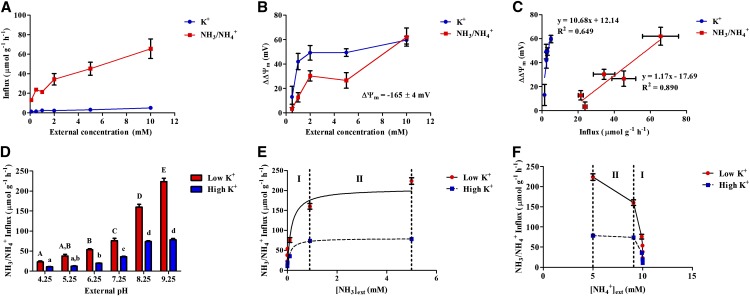Figure 1.
NH3 (not NH4+) is the main permeating species in barley roots. A and B, Concentration dependence of influx (A) and ∆∆Ψm (B) of NH3/NH4+ (red) and K+ (blue) in plants grown at 0.05 mm (NH4)2SO4 and K2SO4. C, Data from A and B replotted to show relationship between ∆∆Ψm and influx. D, Root NH3/NH4+ influx as a function of external pH. E and F, Data from D replotted to show dependence of NH3/NH4+ influx on NH3 (E) or NH4+ (F) concentrations, which were predicted from solution pH, according to the Henderson-Hasselbalch equation (pKa of NH3/NH4+ = 9.25). Area I represents pH 4.25 to 8.25; area II represents pH 8.25 to 9.25. Plants were grown at 5 mm (NH4)2SO4 and either low (0.01 mm, red) or high (2.5 mm, blue) K2SO4. For all sections, error bars represent ± se of the mean (n ≥ 3). Letters in D denote significantly different means (P < 0.05) as determined by a one-way ANOVA with Tukey’s posthoc test. [See online article for color version of this figure.]

